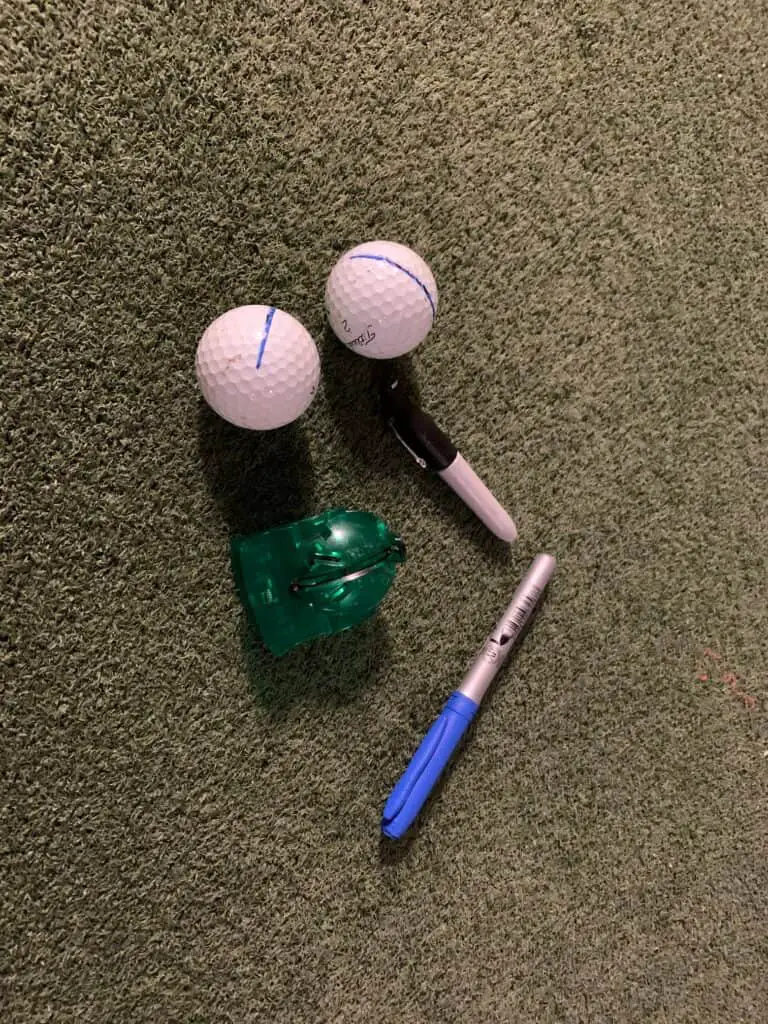We all know the short game is important to shooting our best scores.
It is one thing to hit a lot of greens in regulation or hit our chip shots close, but if we fail to make a handful of putts in that 5-10 foot range, we can grow frustrated and it can ruin a day where you strike the ball solid.
There are many variables when it comes to putting:
- Type of grass
- Condition of greens
- Speed of greens
- Amount of undulation
- Time of day playing your round
The list above could probably go on and on.
But, let’s dive into why you might be pulling your putts and then come up with a solution that can get you headed back in the right direction with those putts.
Why Am I Pulling My Putts?
More than likely you’re moving your body or head excessively, causing instability in the putting stroke or closing the putter face with one of your hands.

7 Keys to A Quality Putt
- Stable head and body
- Confidence in your line
- Stable grip
- Consistent tempo in putting stroke
- Ensure your process and routine remain consistent
- Matching speed and break
- Utilize drills and competition
Key #1: Stable head and body
In the golf swing, there isn’t a need for great speed or power. Unlike the full golf swing, we want to eliminate a lot of the moving parts to help produce a repeatable putting stroke that sends the ball on the proper line.
Whatever stance or grip a golfer decides to puse, the key is to eliminate the variable of a moving head or body, which will throw the putting stroke out of synch and lead to consistency in speed and start line control.
Key #2: Confidence in your line
One of the issues many golfers face as they stand over the putt is the lack of confidence that they have the right line. They can have this ongoing debate in their head about where to aim as they stand over the ball. This leads to idecision and a putting stroke that lacks the conviction to send the ball at the right speed on the right line.
Instead, golfers need to ensure they read the putt, mark their ball and then set the ball aiming at their intended start line. Some golfers are really specific and want to know that they are aiming 2 inches to the right of the right edge of the cup (see Jason Day), while others prefer to putt to a picture (see Tiger Woods).
The eyesight of human beings is best from a down the line view vs standing over a putt with your head angled trying to look down line. As a result, read the putt, set the line up on your ball and then stick with that read. Don’t change when you stand over the putt.

Key #3: Stable grip
If you watch any PGA Tour event you might see that every golfer has a slightly different variation in the putting grip. There is the traditional grip, the left hand low grip, the claw grip, the belly putter, the longer putts and all types of variations in all of those.
So what is best for you? I would recommend experimenting with different grips, stances, etc. until you find the best option for you to start the ball on the intended start line as often as possible.
Whatever grip you select, you want it to stay stable throughout the putting stroke, which will increase your chance of making the putt.
Key #4: Consistent tempo in putting stroke
There are different tempos that golfers use. We see some with a shorter quicker putting stroke and then others might use a longer, slower putting stroke. Once again, it comes down to personal preference with the recommendation to just ensure you are consistent with your tempo.
If one time you are short and quick and the next time you are long and slow, you are going to struggle with speed control and the ability to hit your start line. Similar to the grip, head to the practice green and experiment with different options.
Key #5: Ensure your process and routine remain consistent
Routine is vital here! What is your process or routine? Can you stick with one for 18 holes and live with the result of your putts? The only thing you can control is your process. Did you read the putt? Did you line up the line on your ball? Did you stay committed to that line? Did you practice your swing length prior to approaching the ball?
The best golfers are going to measure their success not by putts made, but by how often they hit their intended start line at the pace they wanted to. If you can control these things over time, you will make more putts.

Key #6: Matching speed and break
These are the two most important parts of putting. The grip, the tempo, the read are all set up to help you pick the right speed for the break at hand. Overtime, a golfer gets better at reading putts.
One of the most difficult things about playing in scrambles is standing around watching everyone putt and guessing at a line because golfers typically have different preferred speeds for a variety of putts. You end up seeing lines that are good for your putting stroke. Take your time and then commit to the speed and the break you have selected.
Key #7: Utilize drills and competition
There are a variety of putting drills you can use. I believe the majority of putting practice should take place from 10 feet and in and from 30 feet or more. The two most important stats are putts made between 3-10 feet and then 3 putt avoidance from 30 feet or more. Spend time training your speed and your reads by hitting 30 foot putts and then the shorter putts inside of 10 feet.
See how many times in a row you can 2 putt from 30 feet and beyond. Take one ball, select one hole and hit the lag putt. See if you can then make the 2nd putt. See how many times you can do this in a row. Take your time with the shorter putts and mark and set up the putt like in a game like situation.
If you can find someone to compete with, this is even better. Build up the pressure and test your putting stroke and your ability to be clutch and make a putt when you really want to!
My Secret To Golf Improvement
Let’s face it, in order to get really good at golf, we must practice frequently. About four years ago, I made the leap and invested in a golf simulator build for my garage. I went with a SkyTrak Launch Monitor and the TGC software and can now play over 100,000 courses including Augusta, Pebble Beach, Bethpage Black, Whistling Straits. St. Andrews and many other of the top 100 courses in the world.
This golf simulator setup, which is more affordable that you might imagine, has been a game changer. I can now play golf everyday of the year regardless of rain, snow, cold weather or time of day. I can practice or play rounds of golf. I can stand in the 11th fairway at Augusta and with the auto-rewind feature I am able to practice my approach shots from various differences.
It is worth checking out through Rain or Shine Golf as they offer some incredible packages along with financing offers that are difficult to beat.
Some direct links to Rain or Shine Golf for pricing and financing:
Other Putting Related Posts:
- Short Putter vs Long Putter
- How Many Putters Should I Own?
- What Golf Putter Should I Buy?
- Cross Handed Putting Grip
- Putting With An Open Stance
Take Action – What You Can Do Today to Get Better
What does this mean for you? I believe in the following recipe to get better:
1 – Improve your motion in the golf swing by identifying a golf instructor. Here are some options:
Here is a list of golf instructors that we have reviewed:
2 – Train to swing faster and improve your swing speed. Here are some options:
Looking to gain more Speed and Distance in your swing. Two Options:
3 – Understand course strategy and work to break through your next barrier. Here is a series on breaking through:
We have provided guides on how to break 100, 90, 80 and 70. Check out more below, if interested.
4 – Practice Frequently
Did you know that I build a golf simulator in my garage and have played over 500 rounds of golf on my SkyTrak system? It has been a game changer and one worth checking out. Here are some of my other posts on golf simulators frequently asked questions:
- Is a Golf Simulator Worth It?
- How to Build a Golf Simulator?
- What is the Best Golf Simulator?
- Golf Simulator Accessories?
- How to Build a Golf Simulator for under $7000
- Top 11 Reasons to Buy a SkyTrak
- How to Build a Golf Simulator for Under $1000
- Why Build A Golf Simulator?
- What Space is Needed?
- Can A Golf Simulator Improve My Game?
- How Much Does A Golf Simulator Cost?
- Don’t Forget to Check out our 15 best golf swings of all time.
I am an amateur golfer on a journey to get better, enjoy the game as often as possible and share my passion and knowledge with others. I have coached high school golfers at a high level and have a great passion for the game and want to give back. I enjoy learning about the golf swing and am currently studying to be a certified professional golf instructor. Join me in our journey to get better everyday.

